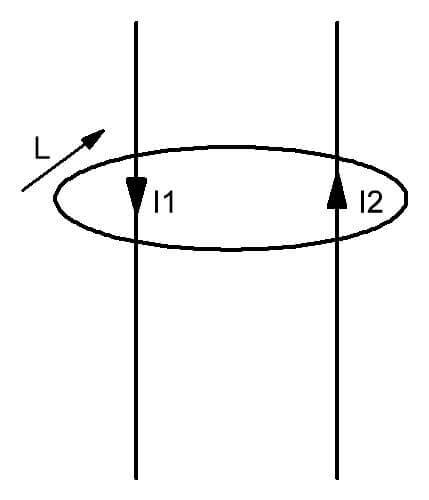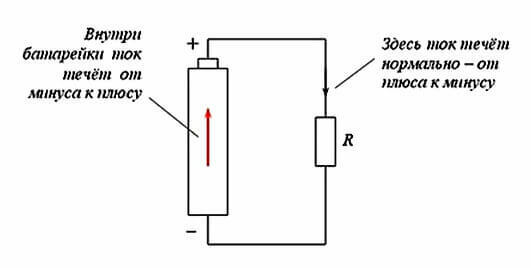Content:
- Briefs about voltage, current and power
- How to translate
- D.C
- Single-phase network
- Three-phase network
Briefs about voltage, current and power
Voltage (measured in Volts) is the potential difference between two points or the work done to move a unit charge. The potential, in turn, characterizes the energy at a given point. The magnitude of the current (the number of amperes) describes how many charges have flowed through the surface per unit of time. Power (watts and kilowatts) describes the rate at which this charge was transferred. It follows from this that the more power, the faster and more charge carriers have moved through the body. One kilowatt has a thousand watts, you need to remember this for quick calculation and translation.
Sounds pretty complicated in theory, let's see it in practice. The basic formula for calculating the power of electrical appliances is as follows:
P = I * U * cosФ
Important! For purely active loads, the formula is used P = U * I, for which cosФ is equal to one. Active loads are heating devices (electric heating, electric furnace with heating elements, water heater, electric kettle), incandescent lamps. All other electrical appliances have some value of reactive power, these are usually small values, therefore they are neglected, therefore, the calculation in the end is approximate.
How to translate
D.C
In the field of car electrics and decorative lighting, 12 V circuits are used. Let's see in practice how to convert amperes to watts using the example of an LED strip. To connect it, a power supply is often needed, but you cannot connect it "just like that", it can burn out, or vice versa, you can buy a too powerful and expensive power supply unit where it is not needed and spend in vain money.
In the characteristics of the power supply on the tag, such quantities as voltage, power and current are indicated. Moreover, the number of Volts must be indicated, but the power or current can be described together, or it can be such that only one of the characteristics is indicated. In the characteristics of the LED strip, the same characteristics are indicated, but the power and current are taken into account per meter.
Let's say you bought 5 meters of 5050 tape with 60 LEDs per meter. The packaging says "14.4 W / m", and in the store only the current is indicated on the PSU tags. We select the correct power source, for this we multiply the number of meters by the specific power and get the total power.
14.4 * 5 = 72 W - needed to power the tape.
So you need to convert to amperes using this formula:
I = P / U
Total: 72/12 = 6 Amperes
In total, you need a power supply unit of at least 6 Amperes. Learn more about how to choose a power supply for an LED strip, you can find out in our separate article.
Another situation. You have installed additional headlights on your car, but the characteristics are indicated on the bulbs, let's say 55 watts. It is better to connect all consumers to the car through a fuse, but which one is needed for these headlights? It is necessary to convert watts to amperes using the formula above - dividing power by voltage.
55/12 = 4.58 Amperes, the nearest denomination is 5 A.
Single-phase network
Most household appliances are designed to be connected to a single-phase 220 V. Recall that depending on the country in which you live, the voltage can be 110 volts and any other. In Russia, the value adopted as the standard is exactly 220 V for a single-phase and 380 V for a three-phase network. Most readers often have to work in such conditions. Most often, the load in such networks is measured in kilowatts, while the circuit breakers are labeled in Amperes. Let's look at some practical examples.
Let's say that you live in an apartment with an old electricity meter and you have a 16 Amp automatic plug installed. To determine how much power the plug will "pull", you need to convert Amperes to kilowatts. The same formula is effective here, linking current and voltage to power.
P = I * U * cosФ
For the convenience of calculations, we take cosФ as a unit. We know the voltage - 220 V, the current too, let's translate: 220 * 16 * 1 = 3520 watts or 3.5 kilowatts - that's exactly how much you can connect at a time.
Using the table, you can quickly convert amperes to kilowatts when choosing a circuit breaker:
The situation is a little more complicated with electric motors, they have such an indicator as the power factor. To determine how much kilowatt per hour such an engine will consume, you must take into account the power factor in the formula:
P = U * I * cosФ
It should be noted that cosF should be indicated on the tag, usually from 0.7 to 0.9. In this case, if the total engine power is 5.5 kilowatts or 5500 watts, then the consumed active power (and we pay, unlike enterprises, only for active power):
5.5 * 0.87 = 4.7 kilowatts, or more precisely, 4785 W
It is worth noting that when choosing a machine and a cable for an electric motor, you need to take into account the total power, so you need to take the load current, which is indicated in the passport to the motor. It is also important to consider inrush currents, as they significantly exceed the operating current of the motor.
Another example, how many amperes does a 2 kW kettle consume? We do the calculation, first you need to perform conversion of kilowatts to watts: 2 * 1000 = 2000 watts. After that, we translate watts into amperes, namely: 2000/220 = 9 amperes.
This means that a 16 Ampere plug will withstand a kettle, but if you turn on another powerful consumer (for example, a heater) and the total power is higher than 16 Amperes, it will knock out after a while. The same is the case with automatic devices and fuses.
To select a cable that will withstand a certain number of amperes, the table is used more often than the formulas. Here is an example of one of them, in addition to the current in it, the load power is indicated in kilowatts, which is very convenient:
Three-phase network
In a three-phase network, there are two main schemes for connecting the load, for example, the windings of an electric motor are a star and a triangle. The formula for determining and converting power into current is somewhat different than in previous versions:
P = √3 * U * I * cosФ
Since the most frequent consumer of a three-phase power grid is an electric motor, we will consider it as an example. Let's say we have an electric motor with a power of 5 kilowatts, assembled in a star circuit with a supply voltage of 380 V.
You need to power it through a circuit breaker, but in order to pick it up, you need to know the motor current, which means you need to convert from kilowatts to amperes. The formula for the calculation will look like:
I = P / (√3 * U * cosF)
In our example, this will be 5000 / (1.73 * 380 * 0.9) = 8.4 A. Thus, we could easily convert kilowatts to amperes in a three-phase network.
Finally, we recommend watching a useful video on the topic:
For operational work, an electrician needs to master the skills of quick translation. Electric motors often indicate both the current, and the voltage, and the power, and its coefficient, but it happens that the plate is lost, or the information on it is not fully readable. In addition to electric motors, it is often necessary to connect heating elements or a heat gun, where, apart from the supply voltage and power, often nothing is known. For optimal cable selection, you need to know how to quickly convert amperes to kilowatts, respectively. We hope that the formulas and tips provided have helped you understand all the nuances of translation. If you cannot convert the power to amperes on your own, or vice versa, write in the comments, we will try to help you!
It will be helpful to read:
- How to choose a circuit breaker
- Calculation of the cable cross-section for current and power
- How to determine the power consumption of devices
 (0)I do not like
(0)I do not like (0)
(0)


